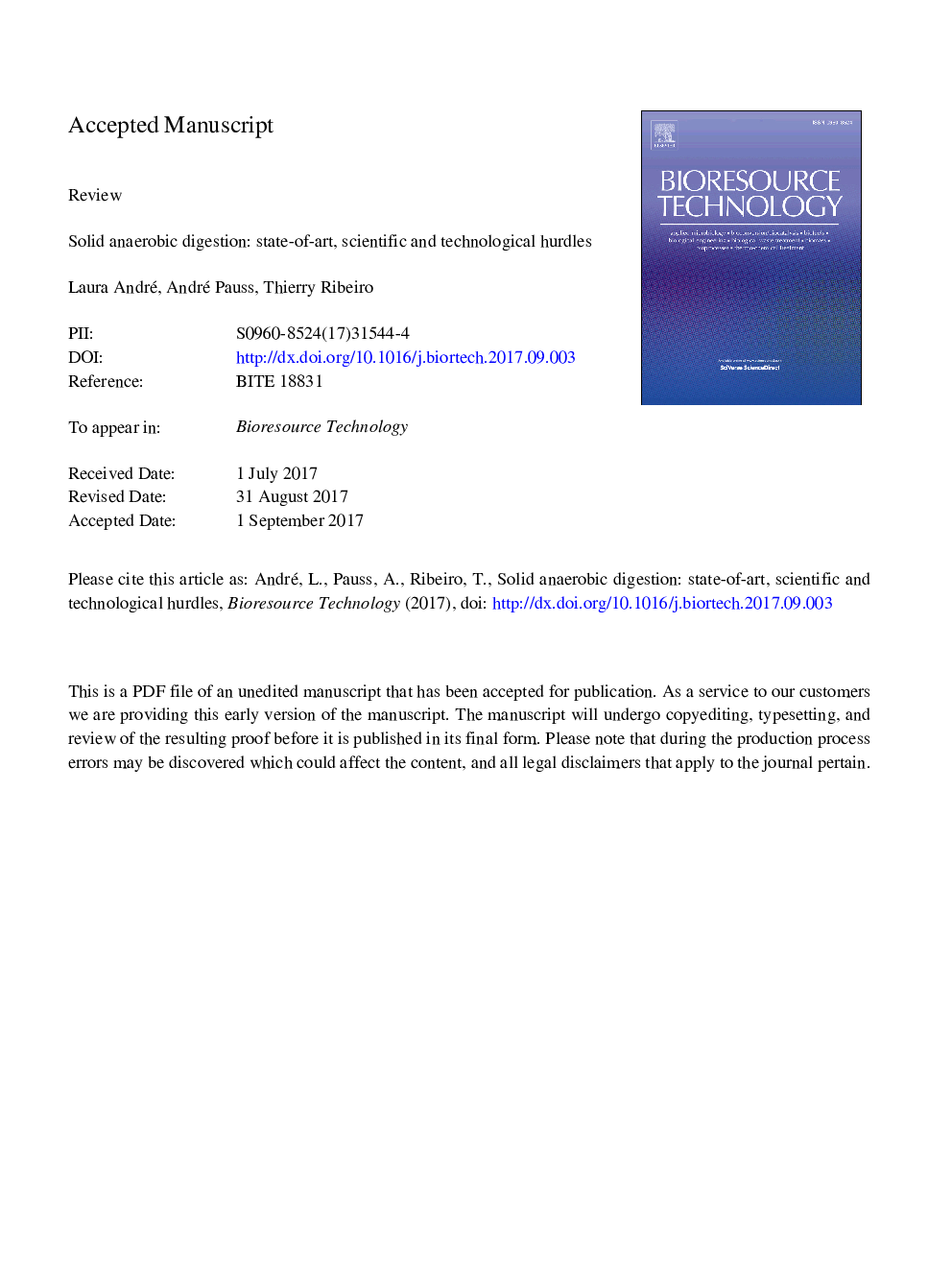| Article ID | Journal | Published Year | Pages | File Type |
|---|---|---|---|---|
| 7069247 | Bioresource Technology | 2018 | 43 Pages |
Abstract
In this paper, a state-of-art about solid anaerobic digestion (AD), focused on recent progress and trends of research is proposed. Solid anaerobic digestion should be the most appropriate process for degradation of by-products with high total solid (TS) content, especially lignocellulosic materials like agricultural waste (straw, manure), household waste and food waste. Solid AD is already widely used in waste water treatment plant for treating plant for sewage sludge but could be more developed for lignocellulosic materials with high TS content. Many research works were carried out in Europe on solid AD, focused on current hurdles (BMP, codigestion, inhibition, microbial population, rheology, water transfers, inoculum, etc.) in order to optimize the solid AD process. In conclusion, hurdles of solid AD process should and must be solved in order to propose better productivity and profitability of such system operating with high TS content (>15%), favouring reliable industrial processes.
Keywords
Related Topics
Physical Sciences and Engineering
Chemical Engineering
Process Chemistry and Technology
Authors
Laura André, André Pauss, Thierry Ribeiro,
